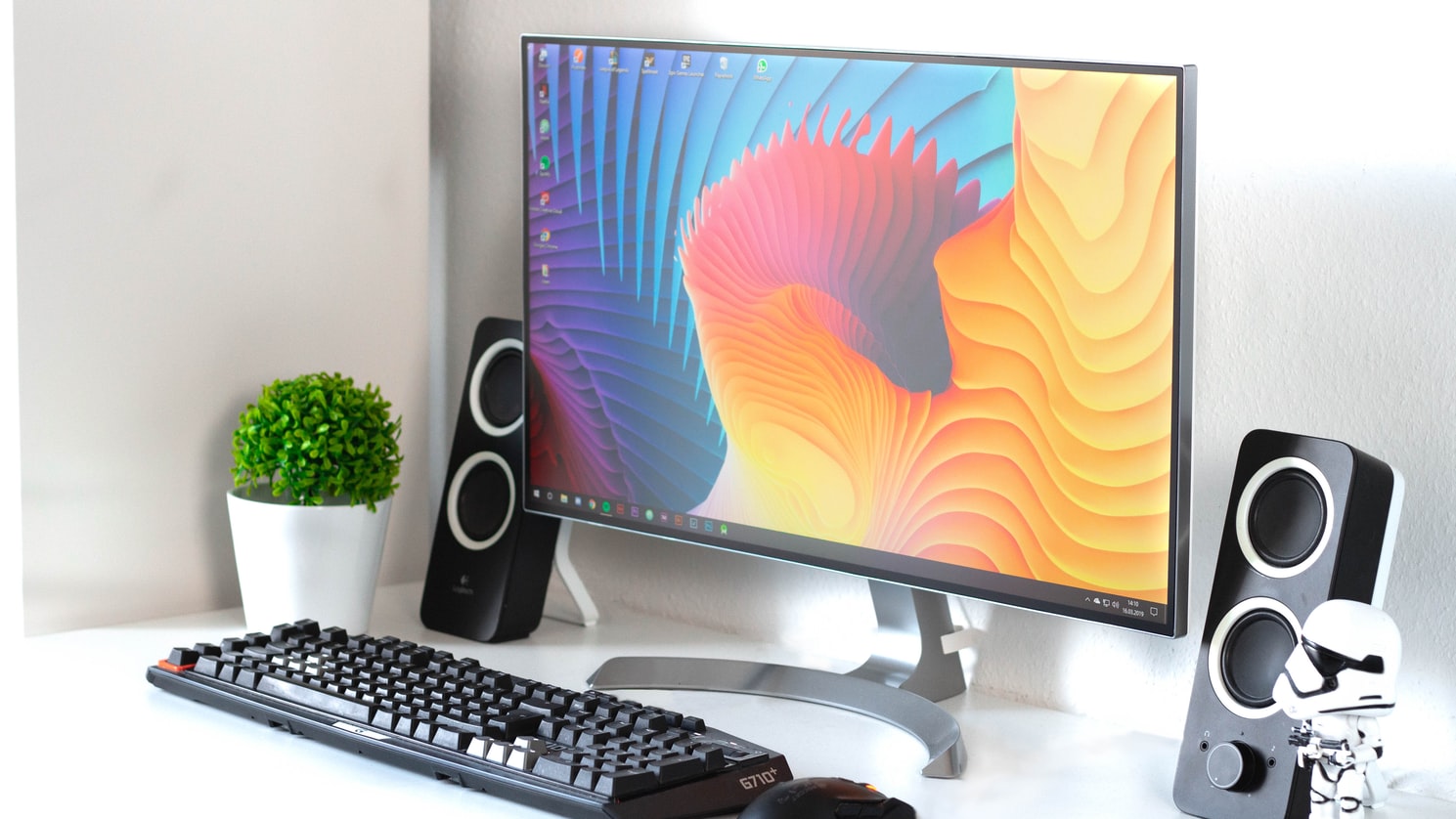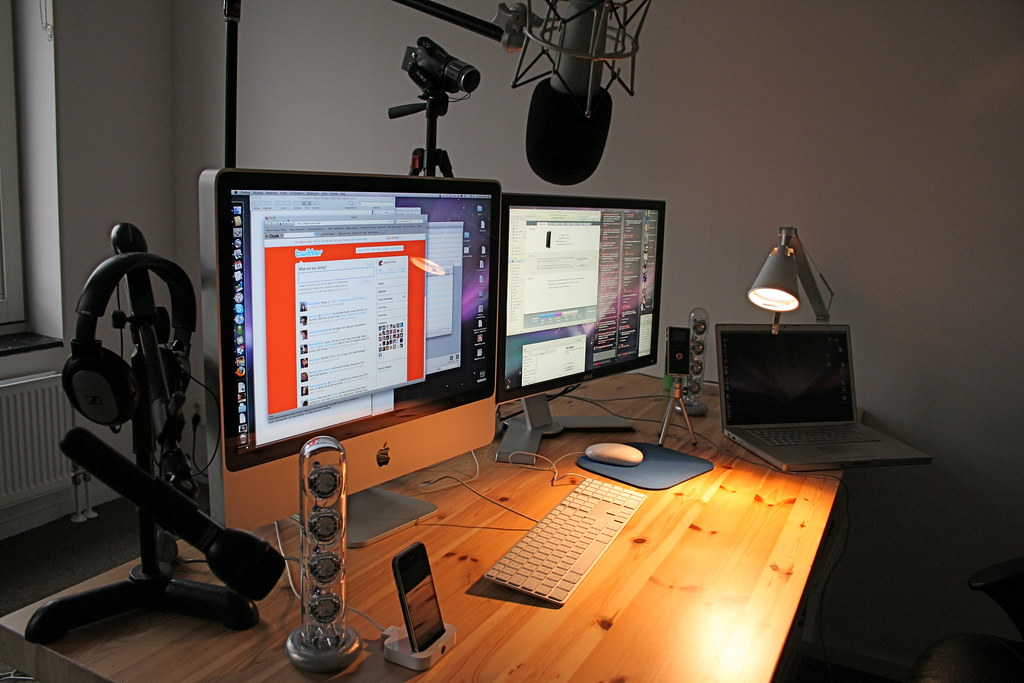With the release of Intel’s 10th Gen CPUs, choosing the right CPU for your PC is not an easy task. It’s especially difficult if you’re not up-to-date on the latest releases and information in the tech-sphere.
Choosing a processor that’s right for your PC is an important balance between your budget, what performance you need and which features.
When it comes to Desktop PC CPUs there are two choices of brand, AMD or Intel. Both brands have their Pros and Cons, which is a whole different article. For this buyers guide, we’ll assume you’re primarily interested in Intel’s offering.
Intel’s 10th Gen CPUs are officially making their way into Chillblast PCs. It’s about time we give you an in-depth look at what Intel is offering this iteration and investigate which CPU is best for your uses.
The Intel 10th Gen CPU Range
Here’s every CPU available in Intel’s 10th Generation. You’ll notice that they’re subdivided into different ranges. Ranging from i3 through to i9 processors. i3 processors are the “low end” of Intel’s offering. They offer great value. However, they’re not intended for serious computing power, that’s where the i7 and i9 ranges come in. More on this later on.
Core i3
- i3-10320
- i3-10300T
- i3-10300
- i3-10100T
- i3-10100
Core i5
- i5-10600T
- i5-10600KF
- i5-10600K
- i5-10600
- i5-10500T
- i5-10500
- i5-10400T
- i5-10400F
- i5-10400
Core i7
- i7-10700T
- i7-10700KF
- i7-10700K
- i7-10700F
- i7-10700
Core i9
- i9-10900T
- i9-10900KF
- i9-10900K
- i9-10900F
- i9-10900
 Image source: Intel
Image source: IntelThis is the range of CPUs available simply in Intel’s Desktop range of processors. There are different models available for laptops and other such devices.
We’re about to go through Intel’s naming conventions. You can use this information to decipher the model numbers (now and in future) and become a more informed consumer. However, If you would rather we just tell you which CPUs are best for each use, you can skip ahead.
Intel 10th Gen CPU Model Numbers and Letters Explained
CPU Model Series
i5-10600
The beginning of the model number outlines which “series” the processor is from. As we mentioned earlier, the i3 processors are the lowest powered. They step up in power until you reach the i9 range, Intel’s most powerful desktop processors.
You can see in the model table above, each model starts with either i3, i5, i7 or i9 and it clearly denotes which range you’re looking at. We’ll dive into the specs of each range in a moment.
CPU Model Generation
i5-10600
After the series icon, we have the number 10. If you’ve been paying attention, you’ll have guessed that this refers to the fact that these are Intel’s 10th Generation of the processor. i5 processors in the 9th generation would have model numbers like i5-9600 etc. Notice how the first number is now a 9, rather than a 10.
If you’re looking at a computer which quotes a model number with a 9, rather than a 10, it’s using last generation’s technology. This is not always a bad thing. In some instances, 10th generation CPUs are still difficult to get in stock, or are much more expensive. Generally, however, a newer generation should be preferred.
CPU Model Number
i5-10600
The numbers following the Generation ID specifically identify which kind of 10th generation processor you’re looking at. In the example above, we’re looking at an i5 series CPU, of the 10th Generation, in the 600 range. Other options in the processor are the i5-10400 and the i5-10500. As you would imagine the higher the number, the more powerful the processor is.
In this example, the difference is the CPU’s frequency. Now, without getting into the complicated world of CPU frequency. A higher CPU frequency is not always better when comparing processors. However, when comparing within the same model and brand, you can assume that a higher frequency will give you a better performing PC.
The i5-10600 has a base frequency of 3.30 GHz (Turbo to 4.8 GHz)
The i5-10500 has a base frequency of 3.10 GHz (Turbo to 4.5 GHz)
The i5-10400 has a base frequency of 2.90 GHz (Turbo to 4.3 GHz)
Whilst that may not seem like much, the additional 0.4 GHz in base frequency between models will make a noticeable difference in certain tasks.
CPU Chip Type
i5-10600K
To keep things simple, we removed the additional letters from the above models. Many Intel CPUs have a letter or two after their name. Intel models without a letter indicate that they are the “base” model. The base models are standard, they don’t support overclocking and they’re not trying to squeeze out every gram of performance or efficiency.
If you see a model number with a letter at the end of it, it means it deviates from the “standard” model in some way.
K Chips
“K” Chips, are what you will most commonly find in performance applications. The K means that they are “unlocked” and you as a user (or Chillblast can do this for you when you purchase a PC with a K chip) can increase the base CPU frequency for additional performance. Something you can’t do with regular chips.
For instance:
The i5-10600k has a base frequency of 4.1 GHz (Turbo to 4.8GHz)
That’s 0.8 GHz more than the “locked” or “standard” i5-10600 model and a massive everyday improvement in performance.
The fact that these CPUs are unlocked, means that they can be “overclocked” when combined with adequate cooling. You can get every last gram of performance out of the chip.
F Chips
“F” Chips are a newer addition to the range. It denotes that the processor does not include an onboard graphics processor.
CPUs have both the ability to process the complicated “behind the scenes” calculations that make the processor run. They also include the ability to output it in a graphical way that we mere-humans can understand.
As the graphic requirement grows with more intensive games and programs, dedicated Graphical Processing Units have grown in popularity too. These GPUs are much more powerful than your CPU could ever be at producing beautiful graphics.
Intel now produces CPUs that are slightly cheaper, and require you to supply your own graphical processing unit.
T Chips
“T” Chips are less known, because they’re less popular and at Chillblast, we typically don’t use them unless for very specific circumstances. These processors are less powerful than similar models, as such they use much less power and produce less heat. They’re useful for some applications, but probably not useful to your average buyer.
KF Chips
Intel will occasionally combine two letters to denote two different technologies in one.
KF Chips are the most common you’ll see and are a combination of both K and F types in one CPU. In this instance, it’s a processor with an unlocked core (K) and lacking a graphics processor inside (F). Useful for certain applications.
Choosing a 10th Gen Intel i3, i5, i7 or i9 Processor
Intel handily breaks down each of its processor groups by the number of cores the processors have, which makes it nice and simple to determine the value you’re getting from each. However, the number of cores you get with a specific range will change through the generations.
10th Generation Intel i7 processors feature 8 Cores and 16 Threads. However, the 9th generation of the i7 features just 6 Cores and 12 Threads. It used to be that an i5 was a quad-core, which is no longer the case.
Core i3
4 Cores / 8 Threads
Up to 4.4 GHz
Core i5
6 Cores / 12 Threads
Up to 4.8 GHz
Core i7
8 Cores / 16 Threads
Up to 5.2 GHz
Core i9
10 Cores / 20 Threads
Up to 5.3 GHz
Hopefully, through us breaking down the naming conventions of each chip, and the above table outline each group’s headline specs, you will have a grasp of what they can do for you. If you’re still unsure of whether to go for an i3, i5, i7 or i9 processor, keep reading. We’ll help you choose which to buy for your specific use.
 Image source: Intel
Image source: IntelA 10th Gen Processor For Everyday Home & Office Tasks
If you’re looking for a system that handles your everyday tasks with ease, you’ll want to choose something towards the lower end of Intel’s 10th Gen range as you won’t need anything unlocked or without graphics.
When we’re researching our PCs for home and office use, we find that the majority of people don’t need more processing power than what a brand new 10th Gen i5 CPU can provide.
With 6 cores and 12 threads and up to 4.8 GHz core speed, 10th Gen i5 processors offer similar performance to the most expensive CPUs from just a generation or two ago, at a much lower cost. Multiple high-speed cores are going to allow your PC to handle large spreadsheets and documents with ease, with plenty of “performance headroom” to handle these tasks for the next several generations.
If your budget won’t stretch quite to a i5, an i3 is still an admirable and strong CPU in the 10th generation offering, if you’re dedicated to choosing an Intel over an AMD based computer. Even the most cost-effective i3 in Intel’s 10th generation offers fast clock speeds and hyperthreading.
With 33% fewer cores than the i5, it’s not going to be quite as effective in some intensive tasks, but as an “all-round” PC that’s going to last several generations of internet-browsing, photo-sharing, and word-crunching – you’re good to go.

The Best 10th Gen CPU For Gaming
The best CPU for gaming typically has the highest clock-speed available. Most of today’s games don’t take advantage of multi-core processing as well as other programs do, so it’s as much about fast a single core can do the most work, as how many cores it has. As you will have seen in the above tables, the more expensive higher clock-speed processors also feature more cores.
The best performance in light gaming with an Intel CPU is to be gained through an i5 or i7 CPU. an i7 CPU is going to deliver you greater performance in every task when compared to the i5. However, naturally this will need an increased budget.
Choosing a CPU for light gaming is a trade-off for budget and speed. If gaming performance on a budget is your ultimate goal (and you’re set on choosing intel, over AMD), then an unlocked i5 is one possible option.
Choosing an unlocked 10th Gen i5, with an aftermarket CPU cooler allows you to make use of our free overclocking service. We’ll increase your CPU’s clock speeds to give you better gaming performance, and ensure system stability and cool temperatures.
This will allow you to save a little budget and put it towards a more powerful Graphics Card, where you’ll see real performance differences.
However, if you’re looking for a no-holds-barred, best-of-the-best gaming computer. Something to show-off and to deliver the best performance imaginable, you’ll want an i9 processor. Reasons for why we’ll discuss in the next section.

Best 10th Gen CPU for Gaming, Streaming, Recording and Content Creation
If you’re a gamer, but you also record and stream your content, you’ll need something a little more powerful than Intel’s 10th Gen i5 and i7, even with overclocking.
In our range of Content Creation PCs, we use 10th Gen i9 CPUs where possible. Their high-speed multi-core performance makes them Intel’s best offering for content creators. When your Gaming PC is running the Game, OBS is recording AND streaming, and Chat is blowing up, you need something that can handle everything being thrown at it.
The i9 has 10 Cores and 20 threads running at up to 5.3 GHz, which is more than enough power to stream, edit and play games. But if you need something a little extra, most of our systems come with the unlocked version of the i9, allowing for overclocking to get even more power from your machine with adequate cooling and motherboard support.

Best 10th Gen CPU for Flight Sim
Flight Simulation PCs need high-speed cores in order to perform to their best ability. You’ll notice that our entire range of Flight Simulation PCs utilise some form of unlocked processor, unless budget constricted. This allows us to get the best clock-speed through overclocking, and deliver the best possible flight sim experience.
Flight Sims need to be able to calculate physics and flight characteristics as you navigate. Since your navigation isn’t predictable, the PC needs to make these calculations in real-time. If it can’t calculate fast enough, you encounter stuttering where the PC is trying to catch-up.
It’s unfortunately not something that additional cores are able to help with all-that-much. The best CPU for flight simulation is the CPU with the fastest clock-speed – The i9-10900K.
That’s not to say that a single-core CPU at 6 GHz is better than Intel’s 10th Gen i9 at 5.3 GHz. Your PC isn’t just running the simulation, remember. Your PC will be using the other cores, and the simulation will be using them too, but the extra cores won’t make as much performance as additional clock-speed, and a high-end GPU will.

Best 10th Gen CPU for Photography and Video Editing
Programs such as Adobe’s Photoshop, Lightroom, After Effects and Premiere Pro will benefit from both additional cores and clock-speed in Intel CPUs.
On a sliding scale of budget vs performance, simply put, the more you spend, the greater the performance you can expect. You’ll notice that our Photography PCs and Video Editing PCs cover a broad range of budgets.
If you frequently find that you’re in an Adobe program, with multiple windows open, running complicated processes through which ever media you’re editing, it will benefit you to get the latest 10th Generation i9-10900K.
The 10 Cores / 20 Threads are well supported in Adobe’s software, allowing you to make the most of your entire CPU. The higher-than average CPU speed will pay dividends when you begin those intensive processes.
Bare in mind, that the CPU isn’t everything in your PC. Adobe (and other) programs offer Hardware Acceleration through onboard Graphics Cards; they benefit from large amounts of high-speed RAM; and you can always utilise more on-board storage.
However, if you find that you’re working on a case-by-case basis, opening single, smaller projects one at a time, whilst a 10900k processor will still benefit you, you would be better off opting for a more budget-friendly 10th Gen i7 processor.
The (still very high) core-count and clock-speeds will offer great performance, but the budget savings can go towards great GPU (for hardware acceleration), RAM or Storage, which will likely work better with your workflow – by greatly decreasing render time in video projects, for instance.

Get a personalised PC to meet your needs
We don’t expect you to know everything about PCs. That’s what we’re here for! If you’re struggling to narrow down the exact spec that you need in your PC for your uses, give our dedicated Customer Service Team a call, or an email. We listen to your needs and we’ll provide a custom PC design that combines everything you need, with everything we know. It doesn’t cost extra.





